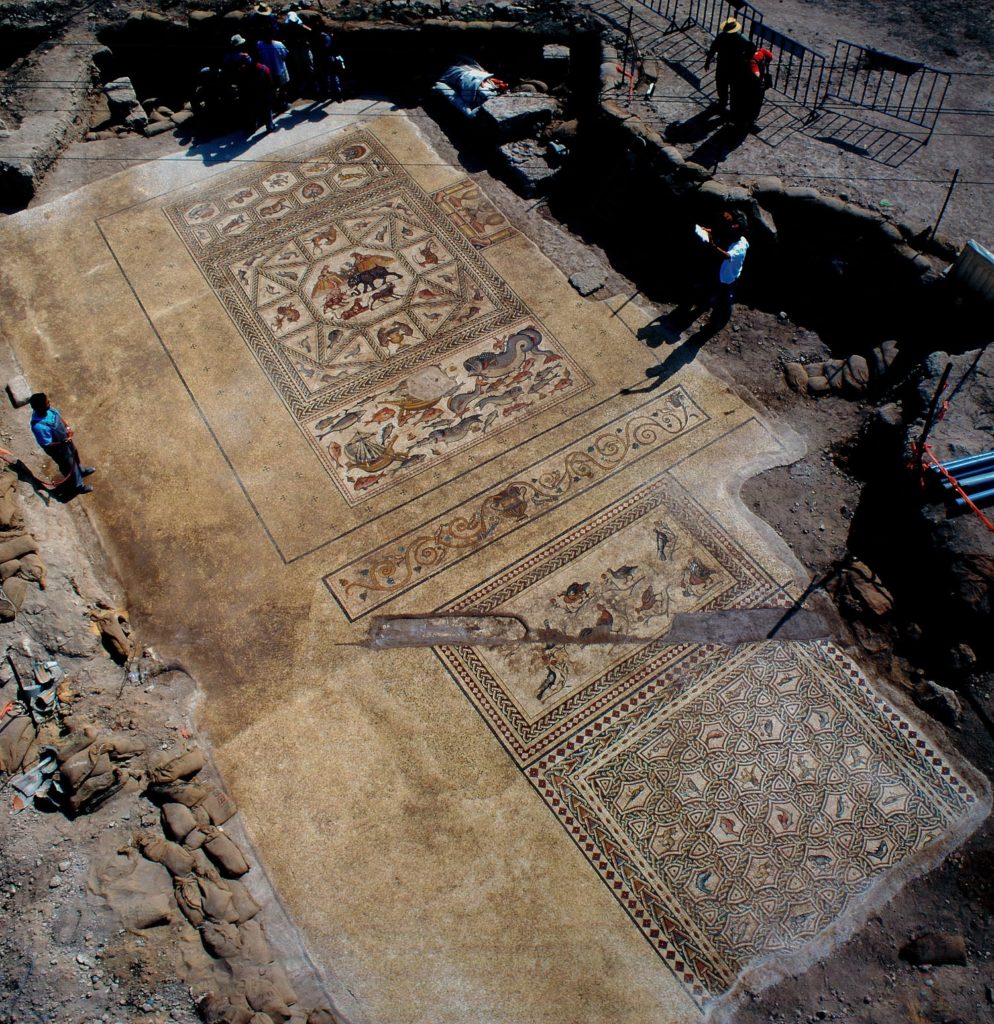An ancient Roman mosaic floor from Lod in Israel is currently exhibited in Venice by Fondazione Giorgio Cini in collaboration with the Israel Antiquities Authority and the Shelby White and Leon Levy Lod Mosaic Center. The Lod Mosaic will be on view until 10 January 2016 at the exhibition centre on the Island of San Giorgio Maggiore.
This is the last European stop in an international tour which included United Kingdom, France, Germany and Russia. On its return to Israel it will be exhibited in a visitor centre to be built in Lod.
The mosaic measuring 180 m2 was discovered during road construction in 1996. Immediately after the discovery, the mosaic was reburied to protect it from the elements which threatened its state of conservation. It was then uncovered again in 2009 and removed from the site. The mosaic served as the living room floor in a villa some 1,700 years ago. The villa was part of a neighborhood of affluent houses in Lod during the Roman and Byzantine periods.
What makes this mosaic unique is its well-preserved state and the variety of motives, picturing merchant ships but above all a world of wild animals, birds and fish. Contrary to other mosaics from the period no human beings or gods are depicted. But this is not the whole story. Another colorful mosaic measuring 140 m2 was discovered in 2014. This mosaic, which is preserved at the archeological site, served as pavement in a courtyard linked by columns and depicts hunted animals, fish, birds and flowers in baskets.
Archeologist Hagit Torge told The Brussels Times that this particular site dates from the Early Roman, Late Roman, Byzantine and Early Islamic periods. “The villa was a huge two-floor building which was rebuilt in the fourth century. The animals depicted in the mosaics – lions, tigers, bears, dolphins - are not from Israel. Artists were probably brought form North Africa to make the mosaic. No religious symbols are depicted so we have no idea who built and lived in this villa. Some of the pictures, however, are symbolic, such as the fish which are a sign of prosperity.”

© Nicki Davidov, Israel Antiquities Authority
Interestingly, Lod at that time, with colonnaded streets and two churches, is depicted in the famous Madaba mosaic map found at a Byzantine church from the 6th century in Jordan.
Lod is a very ancient town dating back to the second millennium BCE. During the Roman period, Lod was called Diospolis (“The city of God”) and was the district capital. In Christian tradition Lod is known as the birth and burial place of Saint George, the knight who killed the dragon. Saint George’s day on November 16 is celebrated every year in the old Greek Orthodox Church in Lod. Today Lod is a mixed Arab-Jewish town struggling to promote co-existence and tolerance among its inhabitants.
M.Apelblat
The Brussels Times

